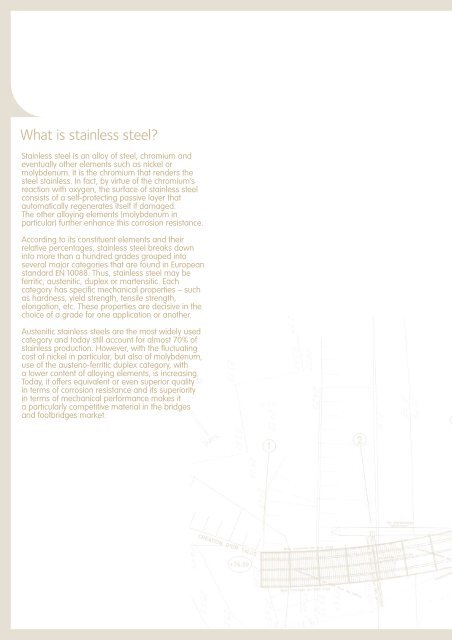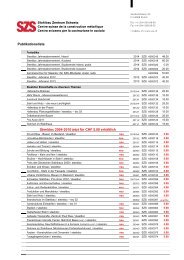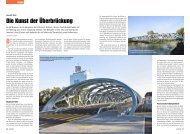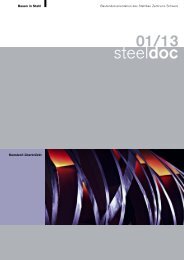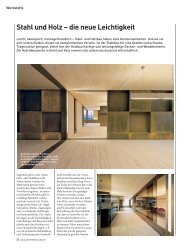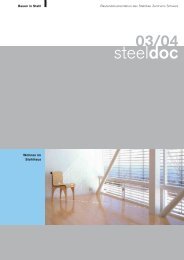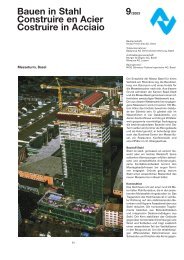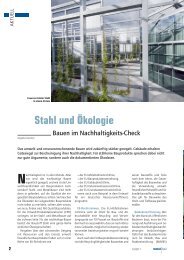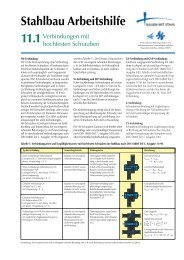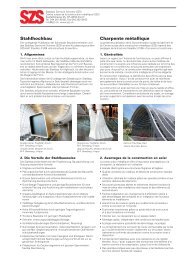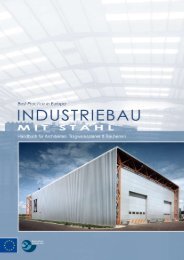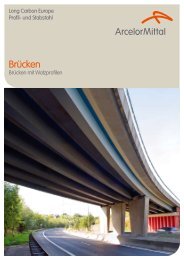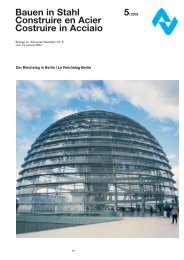Stainless Steel in Bridges and Footbridges
Stainless Steel in Bridges and Footbridges
Stainless Steel in Bridges and Footbridges
You also want an ePaper? Increase the reach of your titles
YUMPU automatically turns print PDFs into web optimized ePapers that Google loves.
What is sta<strong>in</strong>less steel?<br />
<strong>Sta<strong>in</strong>less</strong> steel is an alloy of steel, chromium <strong>and</strong><br />
eventually other elements such as nickel or<br />
molybdenum. It is the chromium that renders the<br />
steel sta<strong>in</strong>less. In fact, by virtue of the chromium’s<br />
reaction with oxygen, the surface of sta<strong>in</strong>less steel<br />
consists of a self-protect<strong>in</strong>g passive layer that<br />
automatically regenerates itself if damaged.<br />
The other alloy<strong>in</strong>g elements (molybdenum <strong>in</strong><br />
particular) further enhance this corrosion resistance.<br />
Accord<strong>in</strong>g to its constituent elements <strong>and</strong> their<br />
relative percentages, sta<strong>in</strong>less steel breaks down<br />
<strong>in</strong>to more than a hundred grades grouped <strong>in</strong>to<br />
several major categories that are found <strong>in</strong> European<br />
st<strong>and</strong>ard EN 10088. Thus, sta<strong>in</strong>less steel may be<br />
ferritic, austenitic, duplex or martensitic. Each<br />
category has specific mechanical properties – such<br />
as hardness, yield strength, tensile strength,<br />
elongation, etc. These properties are decisive <strong>in</strong> the<br />
choice of a grade for one application or another.<br />
Austenitic sta<strong>in</strong>less steels are the most widely used<br />
category <strong>and</strong> today still account for almost 70% of<br />
sta<strong>in</strong>less production. However, with the fluctuat<strong>in</strong>g<br />
cost of nickel <strong>in</strong> particular, but also of molybdenum,<br />
use of the austeno-ferritic duplex category, with<br />
a lower content of alloy<strong>in</strong>g elements, is <strong>in</strong>creas<strong>in</strong>g.<br />
Today, it offers equivalent or even superior quality<br />
<strong>in</strong> terms of corrosion resistance <strong>and</strong> its superiority<br />
<strong>in</strong> terms of mechanical performance makes it<br />
a particularly competitive material <strong>in</strong> the bridges<br />
<strong>and</strong> footbridges market.


